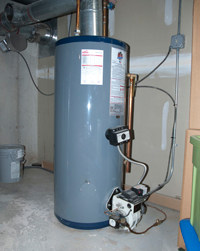What are your ideas with regards to Tips For Maintaining Your Hot Water Heater?

Hot water is important for day-to-day comfort, whether it's for a refreshing shower or cleaning recipes. To ensure your hot water system runs successfully and lasts longer, routine upkeep is essential. This article supplies useful tips and insights on exactly how to preserve your home's warm water system to avoid interruptions and expensive repairs.
Intro
Keeping your home's hot water system might seem challenging, however with a couple of basic steps, you can guarantee it runs smoothly for years to come. This overview covers every little thing from understanding your warm water system to do it yourself upkeep ideas and recognizing when to contact specialist assistance.
Value of Keeping Your Warm Water System
Routine upkeep not only expands the lifespan of your hot water system yet also ensures it runs successfully. Disregarding upkeep can lead to lowered efficiency, higher energy expenses, and even premature failure of the system.
Indications Your Warm Water System Demands Maintenance
Knowing when your hot water system needs interest can stop significant concerns. Keep an eye out for signs such as irregular water temperature level, unusual sounds from the heater, or corroded water.
Flushing the Water Heater
Purging your water heater eliminates sediment accumulation, boosting efficiency and lengthening its life.
Checking and Replacing Anode Rods
Anode poles stop deterioration inside the tank. Checking and changing them when broken is vital.
Complex Concerns Requiring Professional Assistance
Instances consist of major leaks, electrical troubles, or if your hot water heater is constantly underperforming.
Regular Specialist Upkeep Advantages
Professional upkeep can consist of complete assessments, tune-ups, and guaranteeing compliance with safety and security standards.
Evaluating and Readjusting Temperature Settings
Readjusting the temperature setups makes sure optimum performance and safety and security.
DIY Tips for Upkeep
You can do several upkeep tasks yourself to keep your hot water system in leading problem.
Checking for Leakages
Frequently check pipelines and connections for leakages, as these can cause water damage and greater expenses.
Understanding Your Warm Water System
Before diving into maintenance jobs, it's practical to understand the fundamental parts of your warm water system. Normally, this consists of the water heater itself, pipelines, anode rods, and temperature controls.
Month-to-month Maintenance Tasks
Regular month-to-month checks can help capture minor problems prior to they intensify.
Checking Pressure Alleviation Valves
Evaluating the pressure relief valve guarantees it functions properly and prevents extreme stress buildup.
Protecting Pipelines
Shielding hot water pipes lowers heat loss and can conserve power.
When to Call an Expert
While do it yourself upkeep is useful, some concerns require expert proficiency.
Final thought
Normal maintenance of your home's warm water system is essential for effectiveness, durability, and price savings. By following these ideas and recognizing when to seek expert aid, you can ensure a reputable supply of warm water without unanticipated disruptions.
How to Maintain an Instant Hot Water Heater
Before tinkering with your hot water heater, make sure that it’s not powered on. You also have to turn off the main circuit breaker and shut off the main gas line to prevent accidents. Also turn off the water valves connected to your unit to prevent water from flowing into and out of the appliance. 2. When you’re done, you have to detach the purge valves’ caps. These look like the letter “T†and are situated on either side of the water valves. Doing so will release any pressure that has accumulated inside the valves while at the same time avoid hot water from shooting out and burning your skin. 3. When the purge valves’ caps are removed, you have to connect your hosing lines to the valves. Your unit should have come with three hoses but if it didn’t, you can purchase these things from any hardware or home repair shops. You can also get them from retail stores that sell water heating systems. Read the user’s manual and follow it to complete this task properly. When the hosing lines are connected, open the purge port’s valves. 4. You should never use harsh chemical cleaners or solutions when cleaning your unit. Make use of white vinegar instead. It should be undiluted and you’ll probably use about 2 gallons. 5. Now flush your water heater. This task should probably take about 40 minutes. We can’t give you specific directions for this because the procedure is carried out depending on the type, model and brand of your heater. With that being said, refer to the user’s manual. 6. When you’re done draining the unit, you have to turn off the purge port valves again. Remove the hosing lines that you earlier installed on each of the water valves. Put the valve caps (purge port) back in their respective places and be very careful so as not to damage the rubber discs that are found inside these caps. 7. Now that everything’s back in place, check your user’s manual again to find out how to reactivate your water heating system. 8. Once it is working, turn one of your hot water faucets on just to let air pass through the heater’s water supply pipes. Leave the tap on until water flows smoothly out of it. https://www.orrplumbing.com/blog/2014/september/how-to-maintain-an-instant-hot-water-heater/

I came across that piece about How to Maintain a Hot Water Heater in a Few Simple Steps when doing a lookup on the search engines. Sharing is caring. Helping others is fun. Bless you for being here. Return soon.
This Page